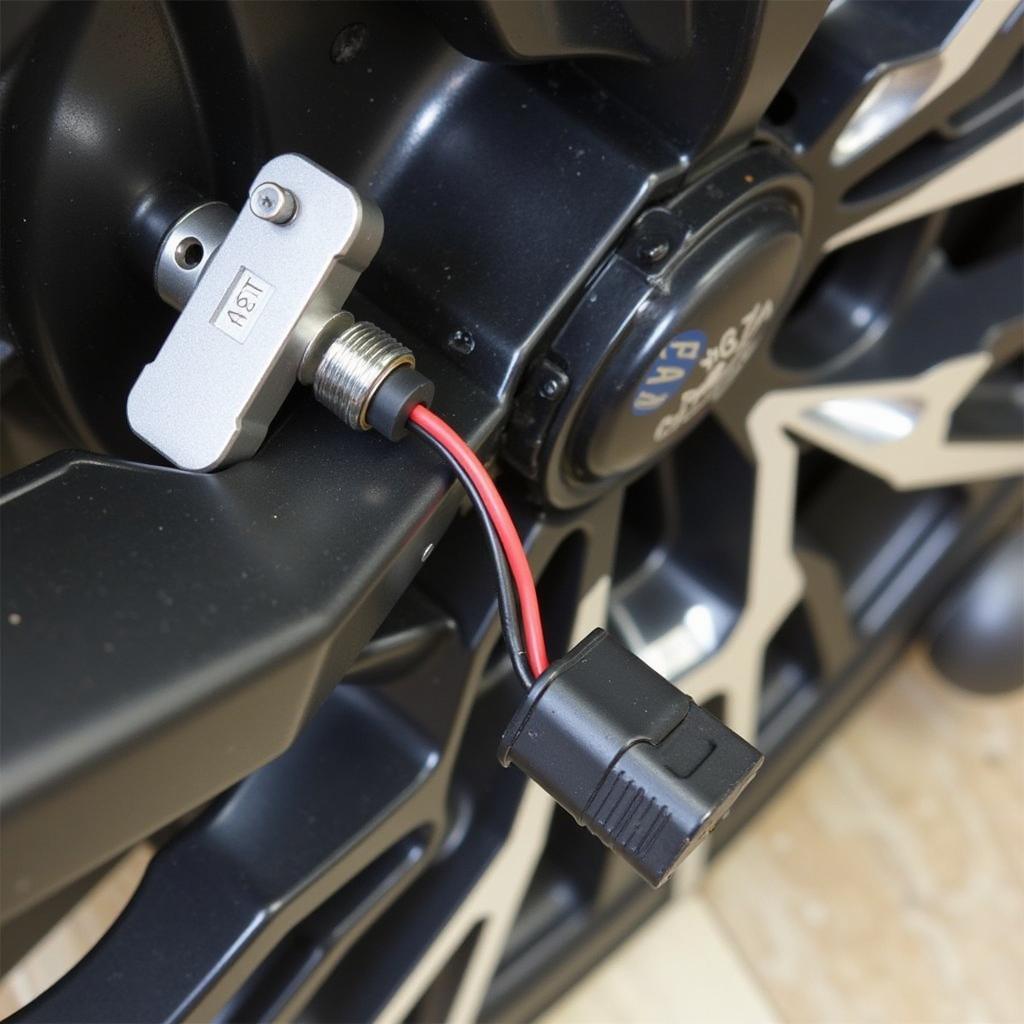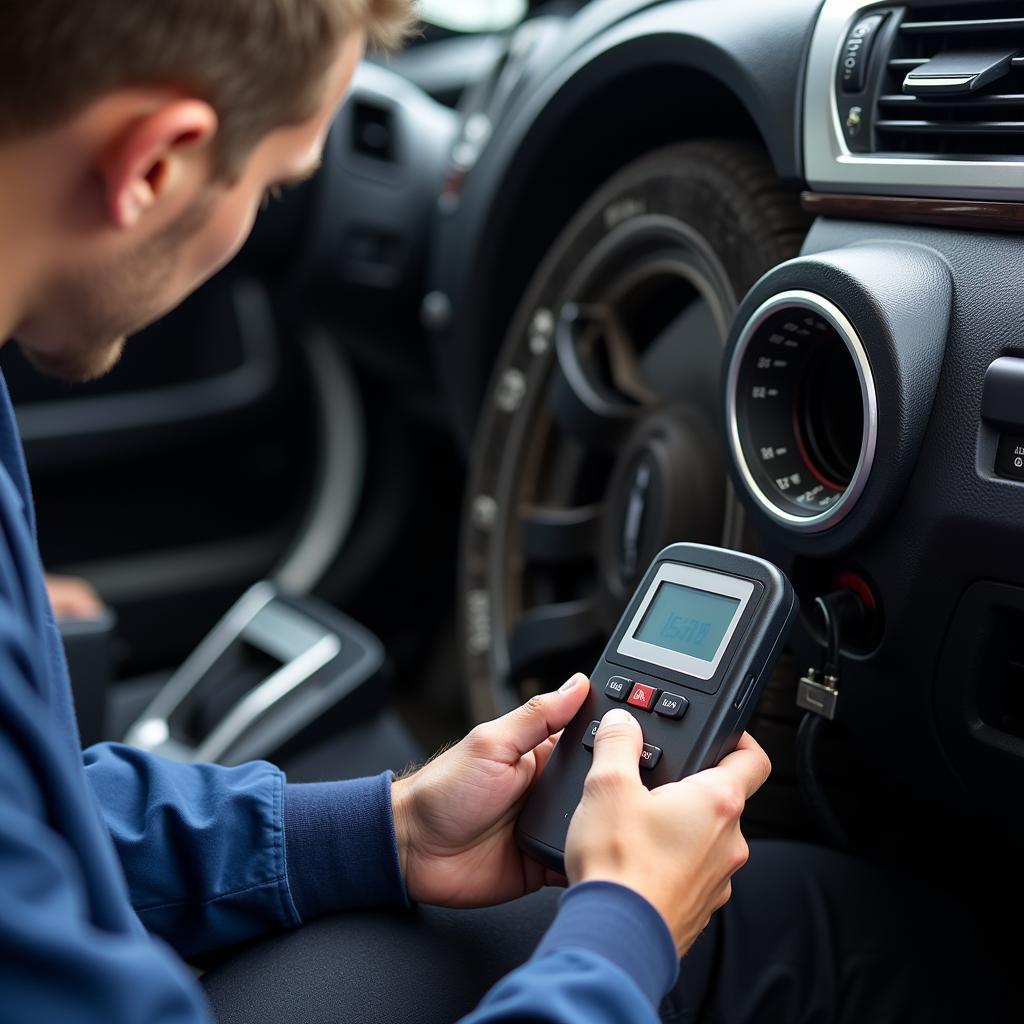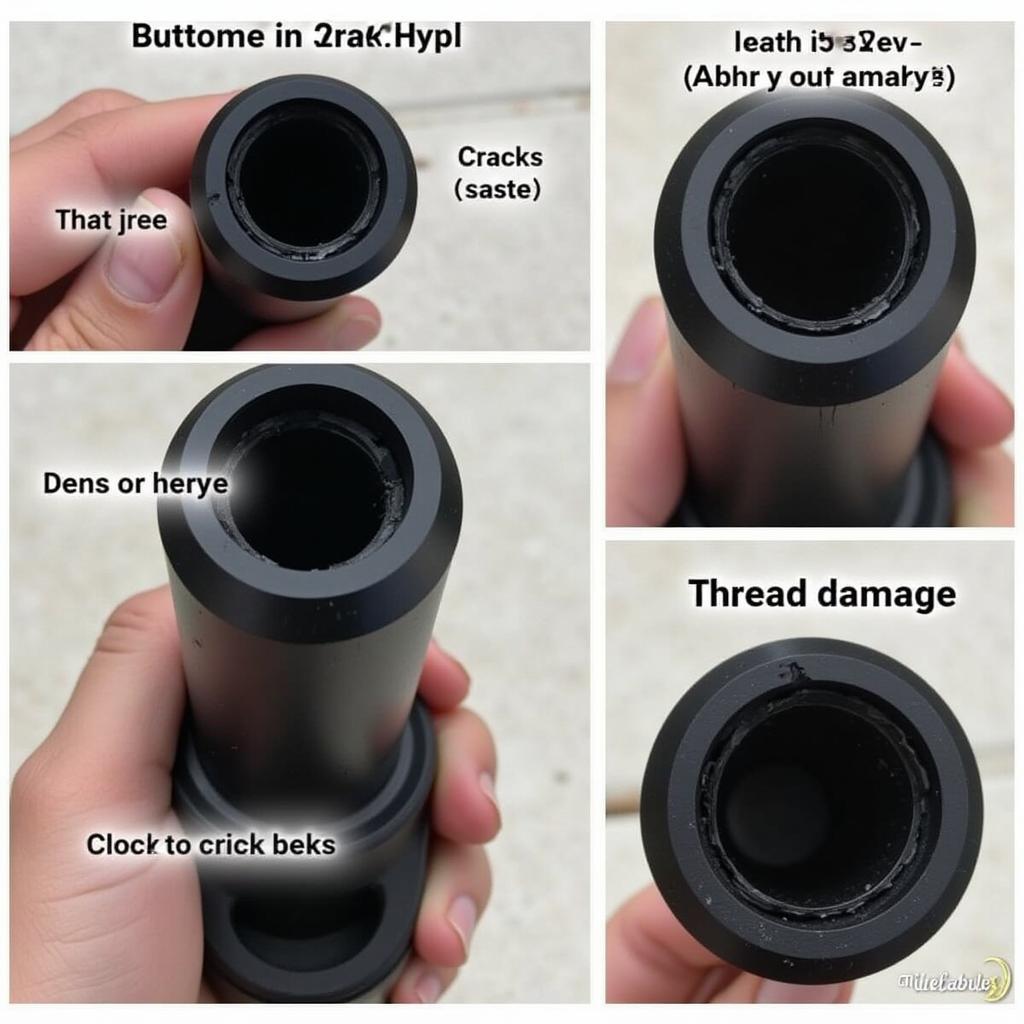The brake pad warning light on your BMW is a crucial safety feature, illuminating when the brake pads wear down and require replacement. Ignoring this warning can compromise your braking performance and lead to costly repairs. While visiting a certified technician is recommended, understanding how to address this warning light can be beneficial.
Understanding the BMW Brake Pad Warning Light
Your BMW monitors brake pad wear using sensors integrated into the brake pad system. When the pads wear thin, the sensor triggers the warning light on your dashboard. This light typically displays as a circle with dotted brake lines on either side, accompanied by a message like “Check Brake Wear.”
Common Causes of Brake Pad Warning Light
While worn brake pads are the most common culprit, several other factors can trigger the brake pad warning light:
- Worn Brake Pad Sensors: Sometimes, the sensors themselves can malfunction or become damaged, triggering a false warning.
- Low Brake Fluid: The brake system operates hydraulically. Low brake fluid can trigger the warning light as it affects overall braking pressure.
- Faulty ABS System: Issues within the Anti-lock Braking System (ABS), while less common, can also illuminate the brake pad warning light.
How to Reset the Brake Pad Warning Light BMW
Resetting the brake pad warning light in a BMW typically requires specialized diagnostic equipment. However, if you’ve replaced worn brake pads and addressed any underlying issues, the light should reset automatically after a short drive.
 BMW Brake Pad Sensor
BMW Brake Pad Sensor
When to Visit a Mechanic
If the brake pad warning light remains illuminated after replacing the brake pads, or if you suspect any issues beyond normal wear and tear, it’s crucial to consult a qualified BMW technician. They can diagnose the problem accurately using diagnostic tools and recommend the appropriate course of action.
 BMW Diagnostic Scan
BMW Diagnostic Scan
Preventing Future Brake Pad Warning Lights
Proactive maintenance is key to preventing premature brake pad wear and warning lights:
- Regular Brake Inspections: Have your brakes inspected at least once a year, or more frequently if you drive in harsh conditions.
- Brake Pad Replacement: Adhere to BMW’s recommended brake pad replacement intervals.
- Driving Habits: Avoid aggressive braking and coasting to a stop whenever possible, as these habits can accelerate brake pad wear.
bmw e90 brake pad warning light
BMW Brake Pad Warning Light FAQs
Q: Can I drive my BMW with the brake pad warning light on?
A: While technically possible, driving with the brake pad warning light illuminated is highly discouraged. Doing so compromises your safety and can lead to further damage to the braking system.
Q: How long can you drive on brake pads after the warning light comes on?
A: It’s impossible to provide a definitive answer, as driving conditions and brake pad quality vary. However, it’s best to address the warning light as soon as possible.
Q: How much does it cost to replace BMW brake pads?
A: Brake pad replacement costs vary based on the BMW model, the type of brake pads used, and labor charges. It’s always recommended to consult a certified BMW technician for an accurate quote.
bmw x3 brake pad warning light
Q: Can I replace BMW brake pads myself?
A: While possible, replacing brake pads requires mechanical expertise and specialized tools. If you’re not comfortable working on your vehicle, it’s best to leave it to the professionals.
Q: How do I know if my BMW brake sensor is bad?
A: Signs of a bad brake sensor include the warning light illuminating prematurely, staying on constantly, or flickering intermittently.
jaguar xf brake pads low warning
Conclusion
Addressing the brake pad warning light in your BMW is essential for your safety and the longevity of your vehicle. While understanding the basics can empower you as a car owner, seeking professional assistance when needed ensures your BMW’s braking system remains in optimal condition. Don’t ignore the warning signs— prioritize your safety and address any brake-related concerns promptly.

